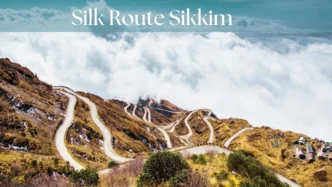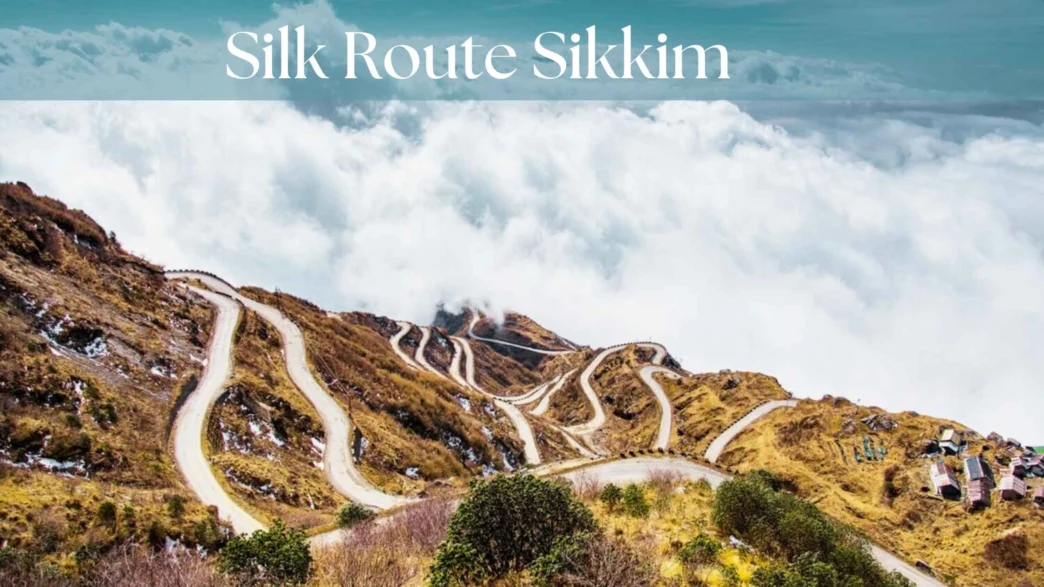The silk route sikkim, an ancient trade network that connected the East to the West, leaves an interesting footprint in the Indian state of Sikkim, which is nestled in the eastern Himalayas. Known as the Old silk route sikkim, this route through Sikkim was one of the several pathways within the larger network of Silk Roads carrying goods, culture, and ideas across Eurasia. Today, the Old silk route sikkim stands out as a favorite tourist destination with impeccable convergence of natural beauty, rich history, and rich cultural diversity. Here, a traveler can traverse the most winding mountain roads, glacial lakes, and remoter villages with the breathtaking Himalayan backdrop.
History of the silk route sikkim
This 2,000-year-old silk route sikkim extends from China into the Mediterranean, proving a crucial trade, cultural, and diplomatic artery, with exchange of silks, spices, teas, and jewels. It stretched across the rugged Himalayas in Sikkim, linking Chumbi Valley in Tibet with trade centers in Kalimpong and Darjeeling in India. However, this network also made the exchange of goods and ideas across great distances possible, which had also contributed to the cultural richness of Sikkim itself.
The Old silk route sikkim was not only a trade route but a cultural melting pot of exchanges between Tibet, Bhutan, and India. Thousands of caravans laden with Chinese silk, silver, and spices passed through it. This helped create economic and cultural linkages affecting the people within the route. Today, the Old silk route sikkim reminds us only of the ancient historic ties of Sikkim with its old trade and cross-cultural exchange centers.
About Route and Destinations Along the Old silk route sikkim .
The journey along the Old silk route sikkim is quite an extraordinary experience through breathtaking views and stoppages in charming villages and high-altitude lakes. The general route begins at the town of Rongli, goes along Zuluk and Nathang Valley, and culminates at the famous Nathula Pass, one of the border posts between India and China.
- Rongli: This small town is the very entry point to the silk route sikkim. The nice green vegetation and the beautiful rivers around add a peaceful beginning to this journey. It’s also the point where a permit to travel through the Silk Route can be acquired.
- Zuluk: Small hamlet set at almost 10,000 feet, Zuluk offers a landscape of great drama and views. The bend in the road to Zuluk is over 32 hairpin bends and a view, which otherwise seems quite dramatic. The population size here is small; ethnic Bhutia and Sherpa communities dominate, who have managed to retain their way of life since ages gone by.
- Nathang Valley: The valley, when seen, is basically awe inspiring in terms of landscapes. This beautiful valley is vastly surrounded by spellboundingly snow-capped mountains and clothed with alpine flora. Nathang Valley is covered with snow during winters, and it adds that much more ethereal look. Nathang Valley is also historically important since it was once a resting place for traders who traveled on the old silk route sikkim.
- Kupup Lake (Elephant Lake): Formed like an elephant, the Kupup Lake is revered and serene en route. At an elevation of more than 13,000 feet, it continues to be veiled under mist for the most part of the year and remains mysterious.
- Nathula Pass: This was once the most prominent trading post over the silk route sikkim. Today it constitutes the Line of Actual Control of India and China and is commanded by the Indian Army. Even though tourists are not allowed to enter into China, they can see the barbed-wire fence marking the pass. One can view the pass on certain dates for Indian tourists with special permits; the view of the surrounding peaks is tremendous.
Cultural and Natural Significance
The Old silk route sikkim is much more than the scenic drive; it is an experience of rich cultural and natural heritage. Monasteries, stupas, and shrines dot the route, painting a picture of deep spirituality and culture. Get a glimpse of the peaceful Buddhist culture at monasteries like the Thambi View Point Monastery.
The Old Silk Route Sikkim is also a heaven for our very important biodiversity. On this route, one goes through lush forests abounding with various flora and fauna, such as rhododendrons, rare orchids, and birds like the Himalayan monal and blood pheasant. And then, the spring time throws the hills in vibrant splashy colors of blooming flowers, adding to the scenic beauty of the route.
Perfect Time to enjoy the Silk Route Sikkim
The best times to visit the Old Silk Route in Sikkim would be from April to June and October to November. The climate will be quite pleasurable and the sky will be clear, allowing for a very good view of the mountain ranges. Summer months are from April to June for those who want to enjoy the rhododendrons in bloom, whereas October and November provide cool crisp weather with clear snow-capped peaks.
The winter months are the heaviest time of snowfall-December to February, specifically in Nathang Valley and Nathula Pass. However, despite how beautiful it looks after that snow, the roads really get quite tough and some places are closed entirely during this period due to heavy snowfall.
Conclusion
Old silk route sikkim is a sojourn through the ages. It traces the steps of the ancient traders and explorers who once trekked upon these spartan tracks. Today, it offers an unforgettable experience for modern-day travelers coming together with historical significance and unparalleled beauty of the great outdoors-from the swinging roads that traverse Zuluk to the calm waters of Kupup Lake, which provide unique insight into the cultural heritage and natural splendor of Sikkim. A journey along the Silk Route in Sikkim promises a once-in-a-lifetime experience into history amidst the breathtaking beauty of the Himalayas.
FAQs on silk route sikkim
-
What is Old silk route sikkim
– India and Tibet historic trade route which is now the most visited tourist path in Sikkim.
-
Where does the Old Silk Route start and end in Sikkim?
– The route starts from Rongli, passes through Zuluk and Nathang Valley to Nathula Pass.
-
Silk Route, Sikkim: Best visiting time
From the summers of April to the monsoon of June to the very beautiful winter of October to November.
-
Travel Permits on Silk Route, Sikkim
A special permit is required. Available at Rongli .
-
Border crossing on Silk Route, Sikkim
No cross borders are permitted at Nathula Pass.
Only viewed from this side of the Indian border.













